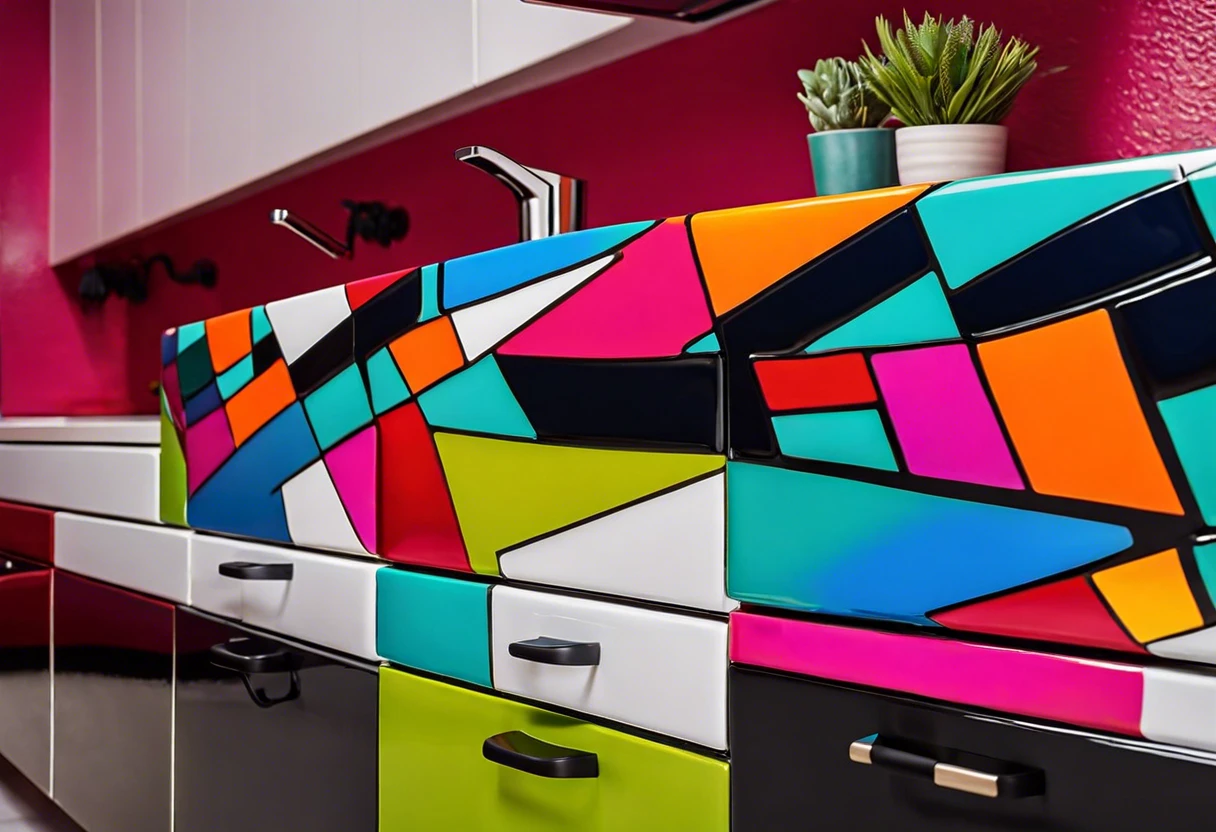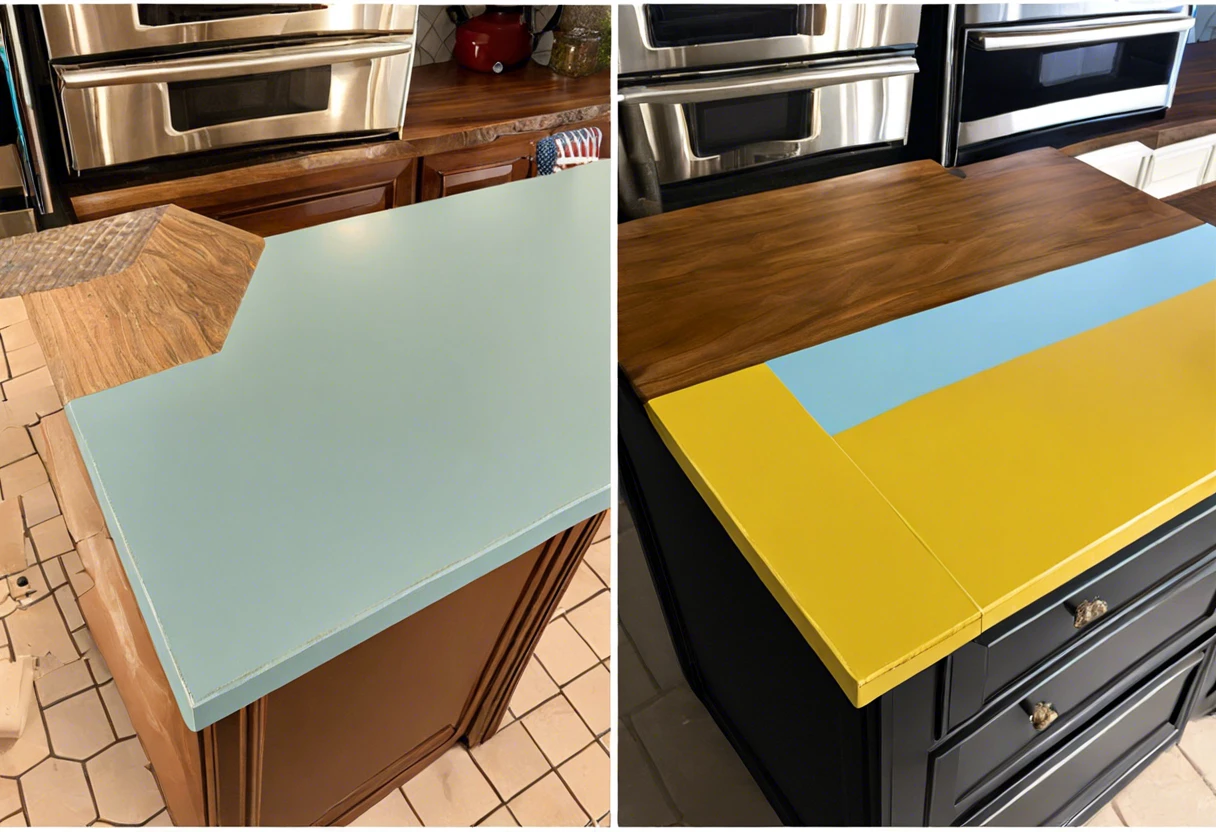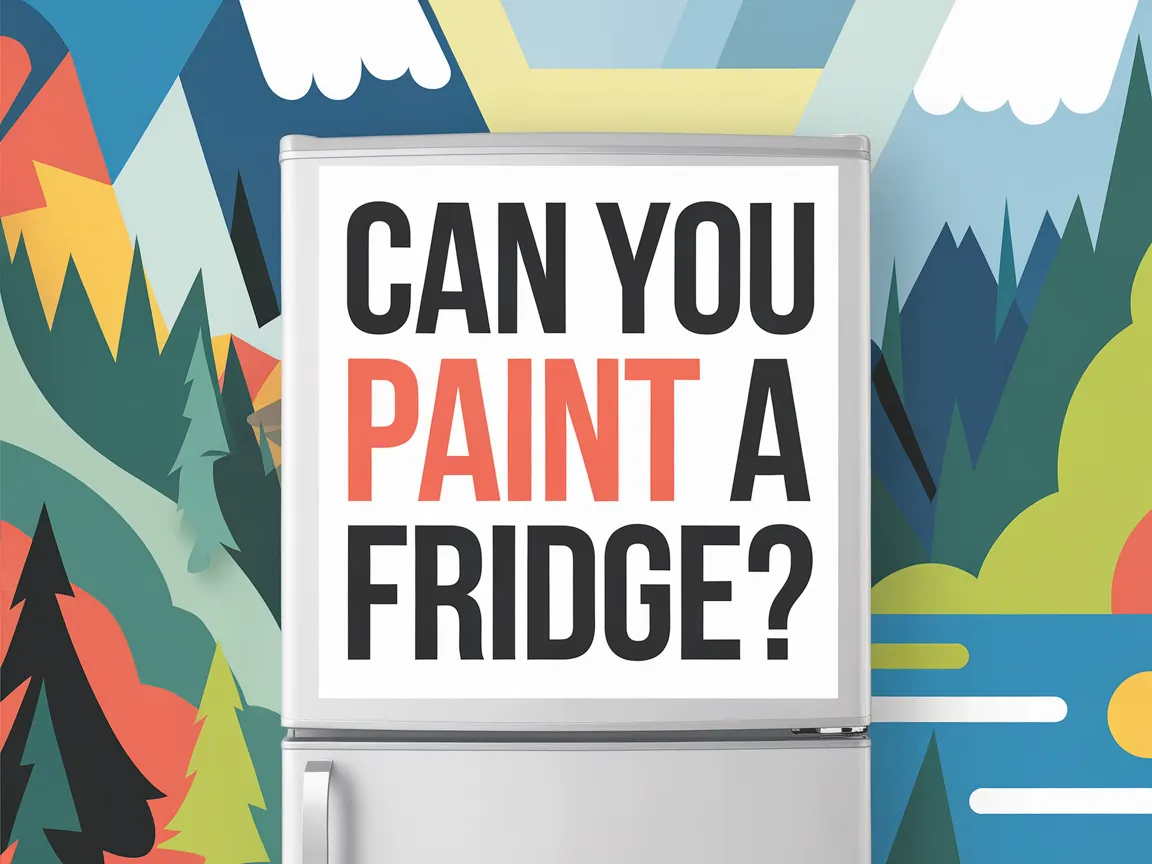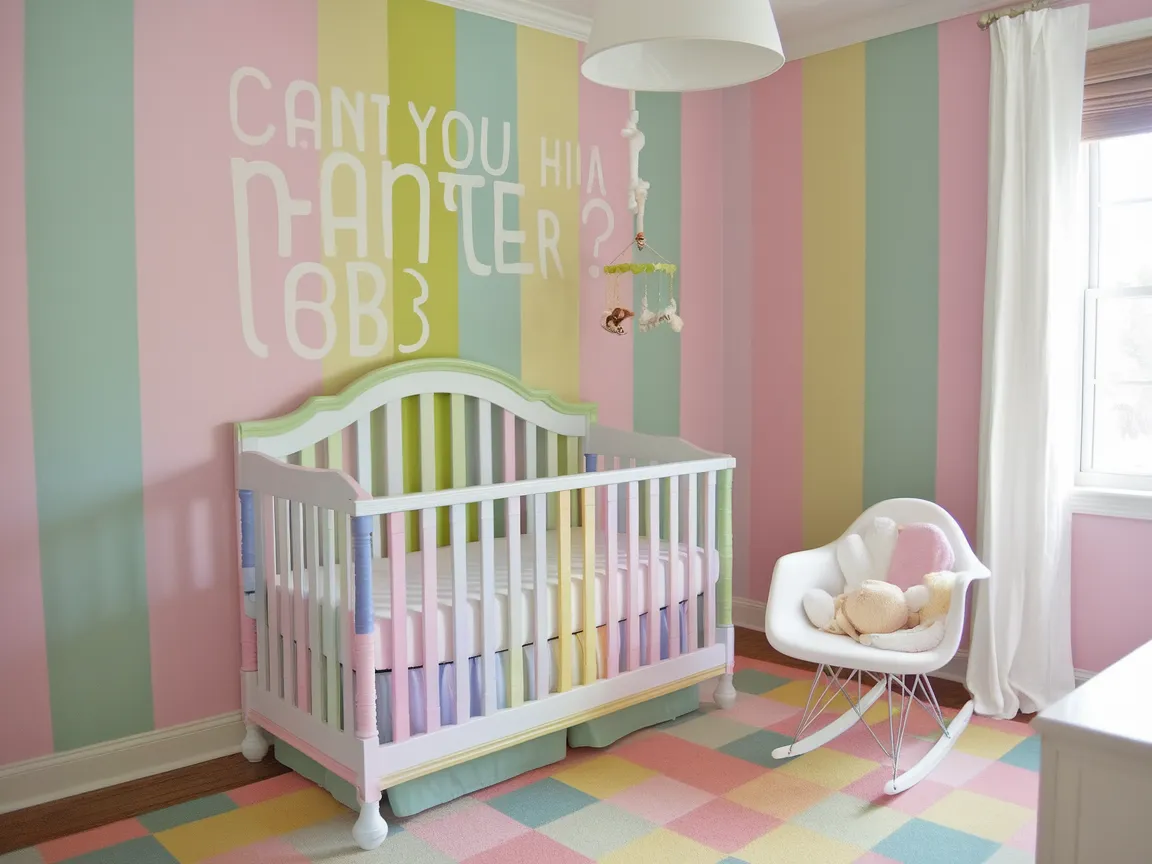Can Countertops Be Painted?
Published on: May 21, 2025 | Last Updated: January 7, 2025
Written By: Sarah McClintock
Countertops are flat surfaces in your kitchen or bathroom where you can chop veggies, mix batter, or just put your stuff. Think of them as your creative playground, where cooking meets fun!
So, can painting kitchen countertops be done? It’s super important to explore this if you want to refresh your space without breaking the bank. I’ve painted mine a few times, and the right paint can make a huge difference.
In this article, we’ll dive into what countertops are, tips before you start painting, steps for a successful makeover, color choices, types of countertops you can paint, factors that affect the outcome, common problems faced, finishing touches, and some DIY project ideas. You’ll find answers to questions like can you paint laminate countertops and what type of paint works best for kitchen cabinets.
Contents
- 1 Can Countertops Be Painted?
- 2 What Are Countertops?
- 3 Before You Start Painting Your Countertops
- 4 Steps to Successfully Paint Your Countertops
- 5 Types Of Countertops Suitable for Painting
- 6 Factors Affecting the Success Of Painting Countertops
- 7 Common Issues When Painting Countertops
- 8 Finishing Touches After Painting Countertops
- 9 DIY Project Ideas for Painted Countertops
- 10 Innovative Techniques for Painting Countertops
- 11 Maintenance Tips for Painted Countertops
- 12 Cost Analysis of Painting Countertops
- 13 Frequently Asked Questions About Painting Countertops
- 14 Conclusion
- 15 Additional Resources
Can Countertops Be Painted?
Yes, countertops can be painted. You can use special countertop paint designed for durability. Laminate and wood surfaces work well with this method. Just be sure to prep the surface properly for the best results! If you’re worried about paint durability and potential staining, check out how to handle paint on different surfaces.
What Are Countertops?
Countertops are flat surfaces found in kitchens and bathrooms, designed for work, cooking, and aesthetic appeal. They come in various materials like granite, quartz, and laminate, with dimensions typically ranging from 120 cm x 60 cm (48 in X 24 in) to larger sizes depending on your space.
You might wonder about painting countertops. A friend recently updated his laminate with paint, saying it breathed new life into his kitchen.
Other friends also shared how painting revitalized their outdated surfaces without a full remodel. They debated how to paint laminate countertops and exchanged tips that inspired me. For instance, they used waterproof paint designed for high-traffic areas—a game changer for maintaining durability.
Before You Start Painting Your Countertops
What do you need to prepare?
- Degreaser: Use a powerful degreaser like Krud Kutter. It removes grime and oil, ensuring your paint adheres well.
- Sandpaper: You’ll need 80-grit sandpaper. It’s essential for roughening the surface to improve adhesion.
- Painter’s Tape: Get a roll of FrogTape. It protects areas you don’t want to paint and helps create clean lines.
- High-Quality Primer: Use Zinsser B-I-N Shellac-Based Primer. It’s crucial for durability and prevents stains from bleeding through.
- Polyurethane Finish: Choose General Finishes High-Performance Topcoat. It protects your painted countertops from wear and tear.
You should now have a good understanding of preparing your countertops, selecting materials, and safety tips. In the next part, we’ll discuss essential steps to successfully paint your countertops. If you’re curious about using different painting techniques, exploring alternative painting surfaces can provide additional creative insights.
Also See: What Temperature Can You Paint Outdoors? Ideal Range!

Steps to Successfully Paint Your Countertops
Here are the steps to ensure your countertops can be painted and look stunning.
-
Choose the Right Type Of Paint
Select high-quality paint specifically designed for countertops. Options like epoxy or acrylic paint offer durability and moisture resistance.
For laminate surfaces, use a primer designed for plastic to improve adhesion, while epoxy paints provide a lasting finish that withstands kitchen use.
-
Prepare the Surface Thoroughly
Start by cleaning your countertops with a strong degreaser to remove dirt and oils. After cleaning, sand the surface with 80-grit sandpaper for better paint adhesion.
Wipe away any dust particles after sanding. A smooth surface is essential; a well-prepped area leads to a perfect finish!
-
Apply Primer for Better Adhesion
Primer is crucial; it greatly enhances paint adhesion. Use high-quality primer, covering the surface fully, and let it dry for at least 2 hours before the next step.
For best results, choose a primer formulated for your countertop material to create an even base for your paint.
-
Paint the Countertops With Care
Apply your selected paint carefully with a foam roller instead of a brush, using smooth, even strokes. Aim for three coats for an intense color, ensuring each layer dries fully before applying the next, generally about 4 hours. If you’re switching between different paint types like enamel and acrylic, you’ll want to know the proper interior painting techniques.
Avoid thick spots, as they can create drips. An even application will give your project a professional look—take your time!
-
Seal the Painted Surface
After painting, seal the surface! A quality sealer, like transparent polyurethane for countertops, protects and enhances the paint’s finish.
Let the first coat dry for about 8 hours before applying a second coat, if desired. Sealing can make the difference between a vibrant look and fading paint!
You should now have a good understanding of effectively painting countertops. In the next part, we’ll discuss suitable countertop types for painting.
Types Of Countertops Suitable for Painting
Let’s cover the types: laminate, wood, stone, and concrete.
-
Laminate
Laminate countertops can be painted! Use a specially formulated primer followed by acrylic paint for the best finish. They come in various colors and designs, making them versatile.
-
Wood
Wood countertops adapt well to paint. Sand the surface first, then apply a wood-specific paint or finish for durability. This type stands up to water when sealed properly.
-
Stone
Painting stone countertops is uncommon but possible with the right paint. Use high-quality epoxy paint for a good bond; it’s crucial to clean and prepare the surface thoroughly beforehand.
-
Concrete
Concrete countertops take on paint easily. Apply a concrete resurfacer or paint made for masonry after prepping the surface; expect modern and chic designs. They’re sturdy when treated properly! If you want to elevate your countertop’s aesthetic, you might consider adding some sparkle to your paint.
Based on my observations and experiences, I prefer painting wood countertops. They provide a stunning finish and enhance the kitchen’s look when done correctly.
We covered various countertop types that can be painted. We will now discuss factors impacting the success of painting countertops.
Factors Affecting the Success Of Painting Countertops
What factors influence your countertops’ fresh look?
-
Surface Material: Materials like laminate, granite, and wood respond differently to paint.
-
Preparation: Cleaning and sanding prepare surfaces, affecting paint adhesion and durability.
-
Type of Paint: Some paints, like epoxy or chalk, suit countertops better than others.
-
Environmental Conditions: Temperature and humidity during painting impact curing time and paint performance.
We’ve wrapped up the factors influencing the success of painting countertops here. Let us turn our attention to common challenges faced during this process.

Common Issues When Painting Countertops
A friend once tried painting his laminate countertops but faced chipping within weeks. He learned that not all paints bond well with laminate.
To fix this, use high-quality epoxy paint. It’s strong and durable, with up to 2,000 psi (Pounds Per Square Inch) adhesion. Sand the surface first to improve bonding!
Finishing Touches After Painting Countertops
After painting countertops, allow at least 72 hours for the paint (Often Acrylic or Epoxy) to fully cure before heavy use. For lasting shine, apply a polyurethane sealer, like Varathane, after 4 to 6 weeks. If you want to elevate your DIY project with professional techniques, check out these expert furniture painting tips.
Inspect painted countertops every 3 months. Look for dull spots and tiny chips, especially near edges and seams. Check for discoloration—UV exposure can fade certain colors within the first year. If you want to enhance your paint’s durability and explore creative options like adding glitter to your paint, consider additional protective techniques.
If you’ve been in the game for a few years, consider using a dual-action sander with 220 grit for seamless touch-ups. It improves surface bonding and ensures a professional finish, which is crucial for high-traffic areas.
DIY Project Ideas for Painted Countertops
Have you ever thought of creating a stunning marble effect on your countertops? Or, how about a bold geometric design that’ll make your kitchen pop!
For these projects, you’ll need a few supplies: primer, a good quality paint (About $30 for a Quart), and a sealant (Around $20). You might spend a weekend (About 6-10 Hours) transforming your space, and the results are totally worth it!
If painting isn’t your thing, try countertop contact paper. It’s user-friendly and super affordable—about $30 for enough to cover a small kitchen. Another option? You could use epoxy resin to create a high-gloss finish; I’ve done it, and the results are jaw-dropping! When exploring DIY surface transformations, you might also want to explore techniques for painting alloy surfaces professionally.
Innovative Techniques for Painting Countertops
Let’s explore some innovative painting techniques that can elevate the look of your countertops!
-
Ombre Effect
The ombre effect creates a stunning gradient. Start with a light color at one end, blending into a darker shade. It adds depth and visual interest!
-
Stenciling
Use stencils to add patterns or designs. You can create intricate borders or playful shapes, transforming mundane counters into art pieces.
-
Rustic Distressing
For a vintage look, try distressing your painted countertops. Lightly sand edges to reveal the base color, giving your countertops a weathered appearance.
-
Textured Finishes
Use sponge or rag techniques to create texture. Dip a sponge in paint and dab it on the surface for a unique, tactile finish.
Maintenance Tips for Painted Countertops
Keeping your painted countertops in top shape is essential for longevity.
- Regular Cleaning: Use mild soap and water for cleaning. Avoid abrasive cleaners that can damage the paint.
- Moisture Control: Wipe spills immediately. Water and moisture can lift paint if left too long.
- Protect with Coasters: Always use coasters under hot pots or drinks. This protects the sealant and paint from heat damage.
- Touch-Ups: Be ready for minor paint touch-ups. Keep some leftover paint for quick fixes.
- Inspect Regularly: Check every few months for chips or wear. Catching problems early can save time and trouble.
Cost Analysis of Painting Countertops
Wanna know the cost breakdown for painting countertops? Let’s dig in.
| Item | Estimated Cost (USD) | Purpose |
|---|---|---|
| Primer | $10 – $20 | Improves adhesion and prevents stains. |
| Paint | $30 – $100 | For a durable, quality finish. |
| Sealer | $20 – $40 | Protects the painted surface. |
| Supplies (brush, tape, sandpaper) | $15 – $35 | Essential tools for application. |
| Total Estimated Cost | $75 – $195 | Varies based on chosen materials. |
Frequently Asked Questions About Painting Countertops
What Are the Best Paints for Kitchen Countertops?
The best paints for kitchen countertops are usually epoxy, acrylic, or chalk paints. Epoxy paints are robust and highly resistant to chemicals, making them ideal for heavy use.
How Long Do Painted Countertops Last?
Painted countertops typically last between 3 to 5 years, depending on the type of paint used and maintenance. Regular care and the right sealant can extend their lifespan significantly.
Can I Paint Laminate Countertops?
Yes, you can paint laminate countertops. Use a high-quality primer and epoxy paint for the best adhesion and durability on these slick surfaces.
What Should I Use to Seal Painted Countertops?
You should use a water-based polyurethane or a two-part epoxy to seal painted countertops. These sealants provide a tough, durable surface that withstands moisture and daily wear.
Is It Possible to Remove Paint From Countertops?
Yes, it’s possible to remove paint from countertops using a paint stripper or abrasive methods. Be cautious; different surfaces require varying removal strategies to avoid damage.
How Do I Maintain Painted Countertops?
To maintain painted countertops, clean with a mild soap and avoid harsh chemicals. Using cutting boards and coasters helps prevent scratches and damage, keeping your surfaces looking fresh.
What is the Cost Of Painting Countertops?
The cost of painting countertops can range from $50 to $200, depending on materials and professional assistance. DIY projects might cut costs, but increasing efforts can yield different results. If you’re considering switching paint types, you might want to explore paint compatibility techniques.
Are Painted Countertops Safe for Food Preparation?
Yes, painted countertops can be safe for food preparation once adequately sealed. Ensure the sealant is food-safe; this minimizes any potential issues.
Conclusion
Phew, we covered a lot—what countertops are, how to prep them, steps to paint effectively, suitable colors, types to consider, success factors, common issues, finishing touches, and some cool DIY project ideas.
Happy to say, you can paint countertops, but the process depends on the type. Use the right paint, prep well, and follow the steps to get a great finish. So, can you paint your laminate countertops or Ikea cabinets? Yes, but remember to choose the right products for the best results.
For further insights and helpful tips, be sure to visit Paint Answers.
Additional Resources
- Edwards, B. (2012). Drawing on the Right Side of the Brain. New York, NY: TarcherPerigee.
- How to Paint Countertops & What You NEED to Know First
- Can You Paint Countertops? What to Know Before Trying This DIY Update




